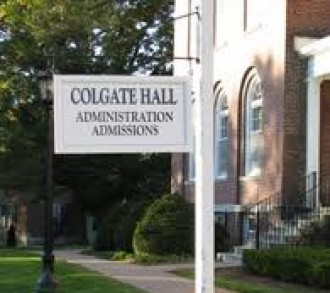15 October 2015 archive
Is Your Student Typical? 0
 The majority of college-bound students do it the wrong way. Is your student in the majority? Fall is college application time for seniors. The Class of 2025 was one of the largest most competitive high school class in American history. 3.9 million students applied to colleges. High school seniors around the country are applying to their Dream Schools.
The majority of college-bound students do it the wrong way. Is your student in the majority? Fall is college application time for seniors. The Class of 2025 was one of the largest most competitive high school class in American history. 3.9 million students applied to colleges. High school seniors around the country are applying to their Dream Schools.
Every year the following scenarios are played out by countless ambitious students everywhere.
SCENARIO ONE: The first is when a student falls in love with a single college but his academic profile is in the lower 50% of the applicant pool. It could be a college that historically has less than a 7% acceptance rate or as high as 40%. He applies in one of the early application programs (ED, ED 1, ED 2, SCEA or EA) thinking he will have a better chance of admittance. It is his “dream school” and, while he may grudgingly add a few more colleges to a list to satisfy a nervous parent, he never really looks beyond that “dream school”. Until, of course, the rejection letter arrives in December. Because his focus and enthusiasm were wrapped up in his dream school, he did not pay much attention to the requirements (download the AAA method at that link) of his other colleges. Some of which had January regular application (RA) deadlines, none of which he is prepared to meet.
SCENARIO TWO: This is more common. As above, the student may have what I call “brand name paralysis” and builds a list solely of “BNP schools.” These are schools like Harvard, Yale, Stanford, UC Berkeley and Pomona where the acceptance rate is so ridiculously low that no matter how good your grades and test scores are, getting in is never a sure bet. Unfortunately, like the “dream school” students, they too are often disappointed. Likely they have been told by parents, teachers, or a guidance counselor that they are excellent prospects for these schools because they are so unique and special. So, they never really look seriously beyond those “lottery schools”…until, of course, the rejection letters start coming in the mail in the spring.
Because of the huge increase in student applications, some of the top students are even being rejected by their safety schools . (Colleges do not want to be thought of as safeties, so they are sending a message basically saying we want you only if you want us.) Talk about humble pie!
These two scenarios illustrate why I believe that college planning should start with an honest; realistic self-assessment. This means taking a critical look at the student’s academic statistics, interests, learning style, and personality.
Obviously, financial issues are important too. You can learn how to minimize student (and parent) debt here.
In other words, begin the college search by identifying several schools where the student has a good chance for acceptance and, more importantly, where he/she would be happy to spend a few years. These are the schools where the student’s academic profile places him or her in the top 25% of the accepted student pool. Once students genuinely appreciate (if not love) at least one “safety” school, they can move on to more selective schools and, yes, even some of the aforementioned most competitive colleges.
